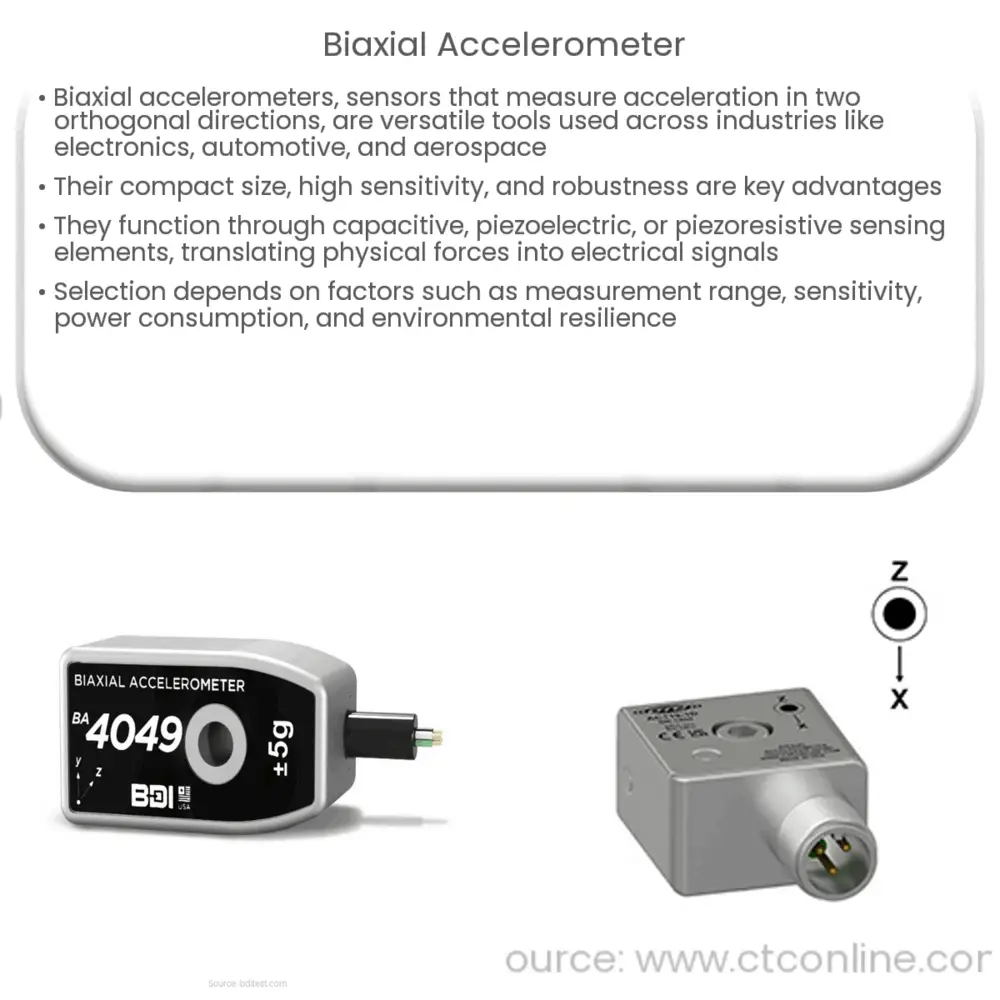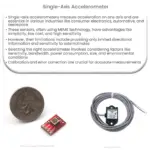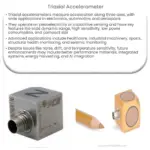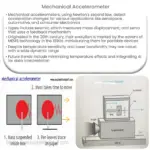A biaxial accelerometer is a compact sensor that measures acceleration in two orthogonal directions, used in consumer electronics, automotive, aerospace, and industrial applications.

Biaxial Accelerometer: A Comprehensive Guide
Introduction to Biaxial Accelerometers
A biaxial accelerometer is a type of sensor that measures acceleration in two orthogonal directions. These accelerometers are widely used in various applications such as consumer electronics, automotive systems, aerospace, and industrial machinery. In this article, we will explore the working principle, advantages, and applications of biaxial accelerometers.
Working Principle of Biaxial Accelerometers
Biaxial accelerometers measure acceleration forces along two axes, typically denoted as X and Y. The sensors utilize different sensing technologies, including capacitive, piezoelectric, or piezoresistive sensing elements. The working principle of these accelerometers is based on Newton’s second law of motion, which states that the force acting on an object is equal to the product of its mass and acceleration (F = ma).
When an acceleration force is applied to the accelerometer, a change in the sensing element’s capacitance, voltage, or resistance occurs. This change is then converted into an electrical signal proportional to the acceleration experienced by the sensor. The output signal can either be an analog voltage or a digital value, depending on the type of accelerometer used.
Advantages of Biaxial Accelerometers
Biaxial accelerometers offer several advantages over their single-axis counterparts, including:
- Detection of acceleration in two planes: Biaxial accelerometers can simultaneously measure acceleration forces along two orthogonal axes, providing more comprehensive information about the motion of the object being monitored.
- Compact size and low power consumption: Due to their small form factor and low energy requirements, biaxial accelerometers are ideal for portable and battery-powered devices.
- High sensitivity and resolution: Biaxial accelerometers are designed to detect even small changes in acceleration, making them suitable for a wide range of applications, from consumer electronics to aerospace systems.
- Robustness and reliability: Biaxial accelerometers are built with durable materials and have minimal moving parts, ensuring long-lasting performance and minimal maintenance requirements.
Applications of Biaxial Accelerometers
Thanks to their versatility and accuracy, biaxial accelerometers are used in a wide array of applications, such as:
- Consumer electronics: Smartphones, tablets, gaming consoles, and wearable devices use biaxial accelerometers for motion detection, enabling features like screen rotation, gesture recognition, and activity tracking.
- Automotive systems: Biaxial accelerometers are used to monitor vehicle dynamics, such as acceleration, braking, and cornering forces, which are essential for advanced driver assistance systems (ADAS) and vehicle stability control.
- Aerospace and aviation: Biaxial accelerometers are employed in aircraft and spacecraft navigation systems, helping to determine pitch and roll angles, as well as providing data for flight control systems.
- Industrial machinery: Biaxial accelerometers are used to monitor vibrations in rotating equipment, such as motors, pumps, and fans, allowing for early detection of potential mechanical failures and reduced maintenance costs.
Types of Biaxial Accelerometers
There are several types of biaxial accelerometers, each utilizing a unique sensing technology. Some common types include:
- Capacitive Biaxial Accelerometers: These accelerometers use capacitive sensing elements to detect changes in acceleration. As the accelerometer experiences acceleration, the distance between the sensing elements changes, altering the capacitance. This change is then converted into an electrical signal proportional to the acceleration.
- Piezoelectric Biaxial Accelerometers: Piezoelectric accelerometers rely on the piezoelectric effect, where certain materials generate an electric charge when subjected to mechanical stress. In these accelerometers, the acceleration forces cause the piezoelectric material to produce a charge proportional to the experienced acceleration.
- Piezoresistive Biaxial Accelerometers: Piezoresistive accelerometers use sensing elements that change their electrical resistance when subjected to mechanical stress. The change in resistance is proportional to the acceleration experienced by the sensor, allowing for accurate measurement of the force.
Selection Criteria for Biaxial Accelerometers
When choosing a biaxial accelerometer for a specific application, several factors should be considered, including:
- Measurement Range: The accelerometer should be able to measure the maximum expected acceleration in the given application, as well as provide accurate readings at lower acceleration levels.
- Sensitivity and Resolution: Higher sensitivity and resolution are desirable for applications requiring precise acceleration measurements, such as vibration monitoring and navigation systems.
- Frequency Response: The accelerometer should have a suitable frequency response to accurately capture the dynamics of the system being monitored.
- Environmental Factors: The accelerometer should be able to withstand the environmental conditions it will be exposed to, such as temperature, humidity, and shock.
- Power Consumption: For battery-powered or energy-constrained applications, low-power accelerometers are essential to minimize energy usage.
Conclusion
Biaxial accelerometers are versatile sensors that measure acceleration in two orthogonal directions, providing valuable insights into the motion of various systems. Their compact size, high sensitivity, and robustness make them ideal for applications in consumer electronics, automotive systems, aerospace, and industrial machinery. When selecting a biaxial accelerometer, it’s crucial to consider factors such as measurement range, sensitivity, resolution, frequency response, environmental factors, and power consumption to ensure optimal performance in the desired application.




